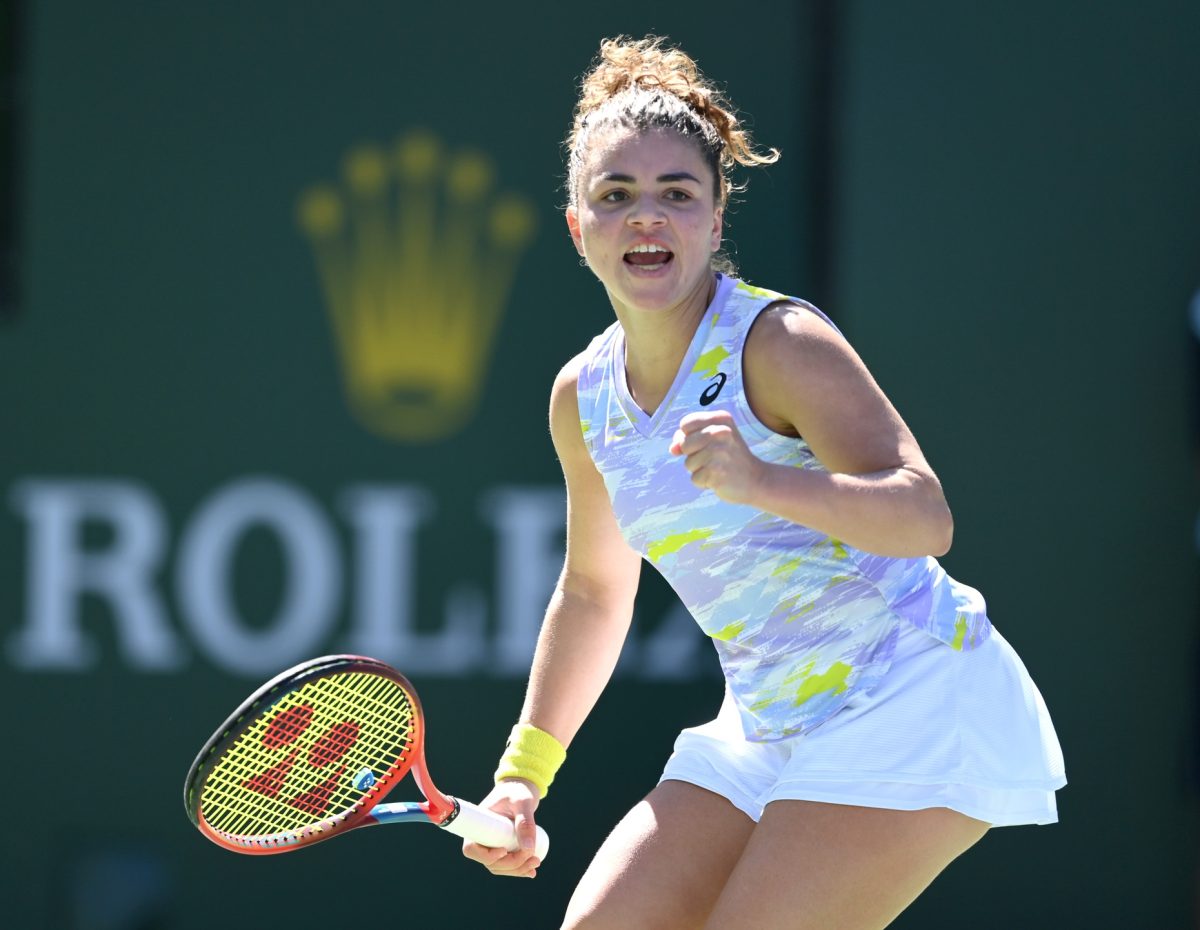Jasmine Paolini and Donna Vekic’s battle was among the most remarkable women’s Wimbledon semifinals ever. Ultimately, Paolini reached the final after a 2-6 6-4 7-6(10-8) triumph. However, things looked bleak for the Italian after the first set. This article summarizes how the French Open runner-up changed her tactics to fight back and reach her second Grand Slam final.
How Jasmine Paolini Adapted to Make Wimbledon Final
Vekic Overpowered Paolini in the Opening Set
Truthfully, it would have been hard for any player to manage against Vekic in the first set. The Croat was finding her spots on serve and hitting powerfully and accurately on return and during the rallies. Paolini tried to match Vekic in the opening set by standing in as much as she could on return and striking the ball imposingly from the baseline. She had done this successfully during her hammering of Emma Navarro in the previous round to reach the semifinal.
But the pace of the Italian’s shots played into Vekic’s hands. She needed to think on her feet to stay in the Wimbledon semifinal, which is precisely what the 28-year-old did.
Paolini Made More First Serves After The Opening Set
Paolini was going big on her first serve in the opening set, winning 73% of points behind her first delivery. However, she only made 47% of her first serves. Vekic consistently having second serves to attack hurt the Italian. She managed to win just 29% of points after missing her first serve.
That led to a change from Paolini in the second set. She took pace off her first serve to avoid giving Vekic second serves to attack consistently. Paolini got 72% of her first serves into play during the second set and 66% in the second set. That disrupted the Croat’s rhythm, meaning she also did not win as many points on second serve return when she got the opportunity in the final two sets.
Paolini Adjusted Her Return Position
The Italian has very quick reactions, meaning she can usually afford to stand in slightly closer on return than some players. However, Vekic’s excellent serving meant adjustment was needed. Midway through the second set, Paolini began standing further back on first and second serve. Although that potentially opened up angles for Vekic out wide, it was a risk worth taking to gain extra time to get a fuller swing on return.
Paolini’s adaptation paid off when she hit some excellent returns at 5-4 to get her first break of the match and take the second set. Her strategy also helped when this year’s champion in Dubai twice trailed by a break in the deciding set. Ensuring she got returns in exploited Vekic’s nervousness, allowing her to break twice and ultimately reach the Wimbledon final.
Paolini Changed the Pace of Her Shots
The completeness of the French Open runner-up’s game was also shown during the rallies in the final two sets. Paolini started using the slice more often to avoid giving Vekic the same ball too often. Getting the Croat to bend low to the ball was also effective because she started to struggle physically in the deciding set after playing many long matches throughout her Wimbledon run. Paolini crucially saved a break point at 0-2 down in the third set to avoid going down a double break after Vekic hit an error off a deep slice from the Italian. She almost certainly would have gone on to lose if she had gone 0-3 down in the decider.
Main photo credit: Jayne Kamin-Oncea-USA TODAY Sports





